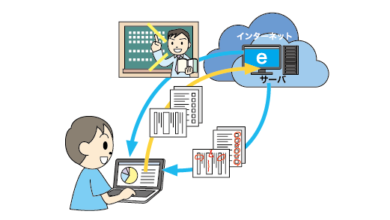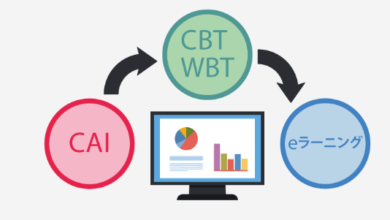15 e-learning system comparisons.
If you are using it for company employee training

For those in charge of training who want to “make in-house training more efficient” or “improve employees’ motivation to learn and improve their skills.” We will introduce an overview of corporate e-learning systems, the benefits of introducing them, comparison points, how to choose by type (content-based, platform-based, etc.)
What is an e-learning system?
An e-learning (e-Learning) system is a system that distributes teaching materials over the Internet and allows you to easily create an online learning environment. It is also possible to create your own curriculum and manage progress, and it is compatible with not only PCs but also smartphones and tablets. It allows you to efficiently conduct employee training and improve skills.
Issues with employee training in companies
Companies conduct various types of training every year, such as training for new employees and training for management staff. However, with face-to-face group training, as the frequency and scale of training increases, issues tend to arise, such as “not being able to keep up with the creation and distribution of training materials,” “it is difficult to secure time, venue, and training staff,” and “it is difficult to keep track of who is receiving which training.”
With an e-learning system, training can be conducted online using a PC, tablet, or smartphone, reducing the burden of securing resources and creating teaching materials, and enabling more efficient training operations.
Recommended e-learning systems
E-learning systems can be broadly divided into two types:
- “Content-based” e-learning that provides training content
- “Platform-based” e-learning that provides only the environment for delivery and attendance
We will introduce recommended services for each type in the latter half of the article. If you want to move on to selecting a tool right away, please click the link above. If you want to know more about the features and how to choose, please continue reading.
If you are looking for an e-learning system, you can download our service introduction materials here.
“E-learning system” Download all documents (free)
List of features and benefits of e-learning system
If you simply want to switch your employee training to e-learning, it’s enough to record and share lectures. However, if you introduce a dedicated e-learning system, you can expect the following benefits. We will introduce the main features for your reference.
<Benefits of introduction>
- Training can be easily conducted as it can be taken on smartphones and tablets
- Students and teaching materials can be managed centrally, reducing the burden on administrators
- Promoting employee skill development through the use of highly specialized external educational materials
- Training effectiveness can be verified and improved through tests and follow-up surveys.
| Key Features | Features |
|---|---|
| Managing students | You can easily register and delete students from the administrator screen. |
| Management of teaching materials | You can register and update your materials simply by uploading them. |
| Creating teaching materials | You can easily create your own teaching materials using the format. |
| Use of external teaching materials | You can choose to take specialized training that cannot be provided in-house |
| Create a learning path | Combine learning materials to create learning courses and assign students to them |
| Attendance Management | Check employee attendance status at a glance |
| Tests and Surveys | This is carried out for each teaching material and course, allowing you to check your understanding. |
| Multi-device compatibility | You can take the course on a variety of devices, including PCs, smartphones, and tablets. |
| Dashboard | Analyze employee learning data from various angles and use it in training planning |
How is it different from an LMS (Learning Management System)?
LMS is an abbreviation for “Learning Management System,” and is also known as a learning management system. It has advanced functions that allow you to visualize and analyze learning status, such as managing students’ progress and grades.
Many LMS also include basic functions such as “distribution of teaching materials” and “management of course history” for e-learning systems, making it possible to centrally manage employee attendance status and analyze the results of external training together with internal learning data. In terms of the basic purpose of “conducting online training,” the two are roughly the same.



